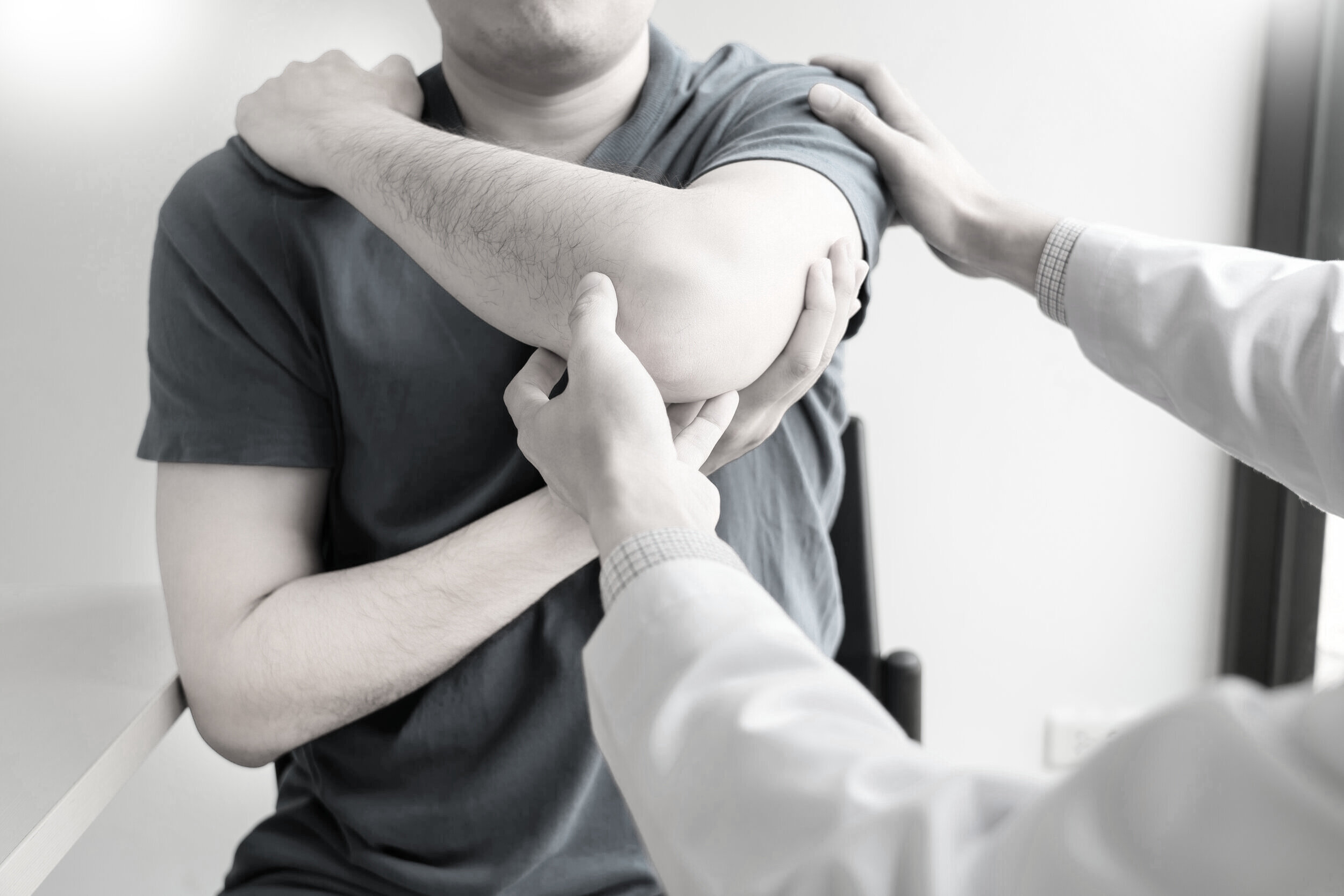Rotator Cuff Tear.
The rotator cuff is a group of four muscles that surround the shoulder joint. The muscles attach to the bone by strong thickened tissues called tendons. The rotator cuff provides some of the stability and motion that occurs at the shoulder. Tears can occur in any of the four tendons. The symptoms of a rotator cuff tear include pain, stiffness and weakness of the affected shoulder.
What causes a rotator cuff tear?
Rotator cuff tears can be acute, chronic or a combination of both. An acute tear of the rotator cuff usually happens as the result of a specific injury such as a fall. These tears are often very painful and you will notice an immediate loss of function in your shoulder.
The blood supply to the tendons is poor which leads to gradual weakening of the tendon over time. Eventually the tendon will start to pull away from the bone and this is known as a chronic tear. Chronic tears typically affect older patients and may be aggravated by repetitive activity or trauma. The loss of function can be quite subtle as the rest of the rotator cuff tends to compensate for the torn part.
Broadly speaking there are two types of rotator cuff tear:
Partial thickness tears of the rotator cuff are when the tendon is damaged but not completely torn from the bone. These are extremely common and do not always require specific treatment.
Full thickness tears are where the tendon has torn completely from the bone making a hole in the tendon.
How is a rotator cuff tear diagnosed?
Usually Mr Moverley can diagnose a rotator cuff tear with a combination of clinical examination and a careful assessment of your symptoms.
Further diagnostic tests are used for confirmation and to plan treatment.
X-rays can be obtained on the day of your consultation and may demonstrate damage to the ball and socket of the shoulder or arthritis.
MRI scans are almost always required to assess the extent and locations of the rotator cuff tears. MRI scanning can also allow Mr Moverley to assess whether surgery is likely to be helpful.
Ultrasound is useful as it can provide a diagnosis and can be combined with a steroid injection to provide initial treatment at the same time.
Treatment options
Mr Moverley will tailor your treatment specifically to the type of tear you have and your symptoms, whilst taking into account your expectations and medical history.
Non-operative Management
Non-operative treatment should always be exhausted before considering any form of surgery. In partial tears and small full thickness tears non-operative measures form the mainstay of treatment. Possible non-operative options include:
A focused physiotherapy program to strengthen the muscles around the shoulder can prevent any further stiffness and help regain range of motion and strength. This will prove beneficial even if surgery is eventually required.
Rest, activity modification, and simple pain relief can provide good benefit, particularly early after the onset of symptoms.
Steroid injections are often used to provide short-term relief, which can then allow you to participate in physiotherapy. Repeated injections should not be given as a long-term solution as they may cause further damage to the tendon.
Surgical Management
Rotator cuff repair (Open or Arthroscopic)
The operation for a rotator cuff tear aims to reattach the tendon to the bone. This is usually performed as an arthroscopic (key-hole) procedure but occasionally large tears require an open surgery through a 10-15 cm scar. The tendon is reattached using small, corkscrew like anchors with stitches attached, which are passed through the tendon to tie it down onto the bone. Examples of the techniques used can be seen here, in reality Mr Moverley will tailor a combination of anchors and techniques to meet the specific requirements of you shoulder.
Arthroscopic debridement
Occasionally partial tears that fail to improve with non-operative treatment can be treated with an arthroscopic procedure to ‘clean up’ the frayed edges of the tear. If the tear is thought to be due to a bone spur or from acromioclavicular joint arthritis, this can be removed at the time of surgery to eliminate the cause of the tear.
Reverse total shoulder replacement
A reverse total shoulder replacement can be performed for pain relief and some restoration of motion if tendon repair is not possible. This is usually reserved for older patients or those who have significant arthritis in the shoulder as well

